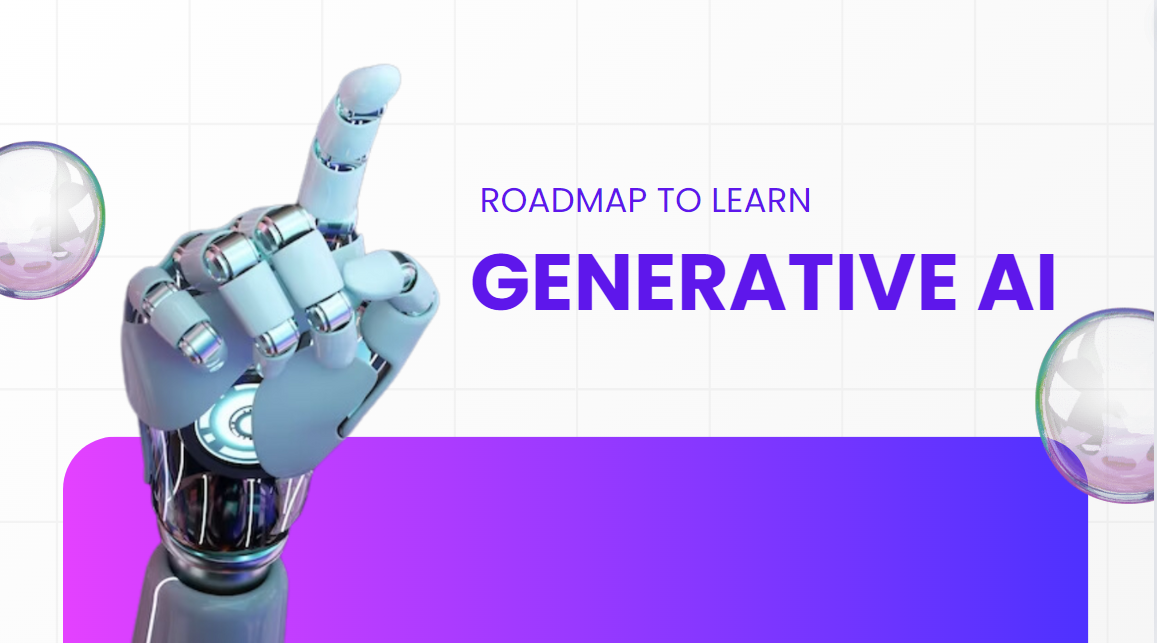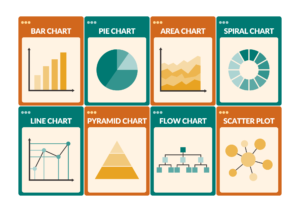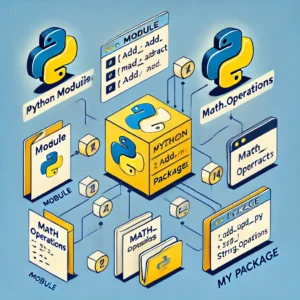Roadmap to learn Generative AI - Introduction
Generative AI is a cutting-edge technology that empowers machines to create content like images, text, and music. This roadmap will help you systematically learn the necessary skills, from AI basics to advanced generative models. By following this guide, you will be able to apply generative AI techniques to real-world problems and innovate in the field.
1. Understanding the Basics of AI and Machine Learning
Before diving into generative models, it’s crucial to have a strong foundation in AI and machine learning (ML).
- AI Concepts: Familiarize yourself with the types of AI (narrow AI, general AI) and the differences between AI, ML, and deep learning.
- ML Fundamentals: Learn how machines learn from data using supervised and unsupervised learning algorithms. Grasp essential ML techniques such as linear regression, decision trees, and clustering.
By understanding these basics, you’ll be ready to tackle more complex concepts in generative AI.
2. Deep Learning Foundations
Deep learning (DL) is at the heart of generative AI. Neural networks, which are composed of interconnected layers of neurons, serve as the building blocks of deep learning models.
- Neural Networks: Study how layers of neurons process input data and extract features. Understand concepts like weights, biases, and activation functions.
- Training Neural Networks: Learn about backpropagation and gradient descent, which are essential to training models to minimize errors.
Deep learning will equip you with the tools needed to understand and implement complex generative models.
3. Convolutional Neural Networks (CNNs)
CNNs are crucial for image-based generative AI tasks. They excel at recognizing patterns in images, which is why they are commonly used in models like GANs and VAEs.
- CNN Architecture: Explore how convolutional layers extract visual features and how pooling layers reduce the dimensionality of data.
- Applications of CNNs: CNNs are widely used in image classification, object detection, and, importantly, image generation tasks.
Mastering CNNs is essential for those interested in visual generative AI.
4. Introduction to Generative Models
Generative models learn the underlying distribution of data to create new, realistic samples. Two popular models are GANs and VAEs.
Generative Adversarial Networks (GANs)
GANs are composed of two neural networks: a generator and a discriminator. The generator creates data samples, while the discriminator tries to distinguish between real and fake samples. This adversarial process improves the generator’s ability to create realistic data.
Variational Autoencoders (VAEs)
VAEs consist of an encoder and a decoder. The encoder compresses data into a latent space, and the decoder reconstructs it. VAEs generate data by sampling from the latent space, allowing for variations in the generated output.
These models are foundational in generative AI, enabling tasks like image synthesis, data augmentation, and more.
5. Recurrent Neural Networks (RNNs) and Transformers
Generative AI isn’t limited to images; it extends to text, music, and other sequential data. For these tasks, you need to understand sequence models.
- Recurrent Neural Networks (RNNs): RNNs are ideal for handling sequential data because they have a memory mechanism that captures temporal dependencies.
- Long Short-Term Memory (LSTM) and Gated Recurrent Units (GRUs): These are variants of RNNs that solve the problem of vanishing gradients, making them better suited for longer sequences.
- Transformers: Transformers are a game-changer for sequence tasks, particularly in natural language processing (NLP). Models like GPT (Generative Pretrained Transformer) leverage the transformer architecture to generate high-quality text.
Mastery of these models opens the door to generative applications in language, speech, and music.
6. Experimenting with Pretrained Models
Pretrained models allow you to experiment with state-of-the-art generative AI without starting from scratch. Platforms like Hugging Face offer easy access to models like GPT-3, DALL·E, and StyleGAN.
- Text Generation: Use language models to create content such as poetry, stories, and automated responses.
- Image Generation: Work with models like StyleGAN to generate images based on different styles or conditions.
Leveraging pretrained models enables rapid experimentation and development in generative AI.
7. Advanced Generative Models
As generative AI evolves, new models are introduced that push the boundaries of creativity and innovation.
- Diffusion Models: These models, such as DALL·E 2, generate data by reversing a noise-based process, producing more detailed and coherent images.
- Neural Radiance Fields (NeRFs): NeRFs represent 3D scenes, enabling the generation of complex 3D objects and environments.
Exploring these advanced models helps you stay ahead in the rapidly evolving field of generative AI.
8. Building Real-World Projects
Learning generative AI is not complete without hands-on experience. Applying your knowledge to real projects is crucial for solidifying concepts and gaining confidence.
Project Ideas:
- Image Generation: Use GANs to create artistic images or enhance photographs.
- Text-to-Image Model: Build a simplified version of models like DALL·E by integrating text prompts with image generation.
- Text Generation Bots: Automate content creation with GPT-based models.
- Music Generation: Explore how RNNs or Transformers can compose music.
Working on projects helps bridge the gap between theoretical learning and practical applications.
9. Joining AI Communities
Collaboration is key to growth in the field of generative AI. By joining AI communities, you can learn from others, share your projects, and contribute to open-source initiatives.
- AI Conferences and Competitions: Participate in events such as Kaggle competitions or attend AI conferences to stay informed about cutting-edge research and network with industry experts.
- Open-Source Contributions: Contributing to AI-related projects on platforms like GitHub helps you refine your skills and gain recognition in the community.
Joining communities accelerates your learning and opens up collaboration opportunities.
10. Staying Updated with Research and Trends
Generative AI is a fast-moving field, with new models, techniques, and breakthroughs emerging regularly. To stay relevant, it’s essential to follow the latest research papers, blogs, and conferences.
- Research Papers: Platforms like ArXiv provide access to the latest AI research, allowing you to explore cutting-edge advancements.
- AI Blogs and News: Follow AI thought leaders, company blogs, and academic researchers to remain informed about the latest trends.
Staying updated ensures that your knowledge remains fresh and that you can innovate in the field.
Conclusion
Generative AI is a transformative technology with immense potential. By following this roadmap, you will gain the skills needed to understand, experiment with, and create generative AI models. Start with the basics of AI and ML, progress through deep learning, and explore advanced generative models like GANs, VAEs, and transformers. Engage with the AI community and continuously update your knowledge to stay at the forefront of this exciting field.
This roadmap will help you embark on your journey to mastering generative AI, unlocking new possibilities for creativity, innovation, and problem-solving.




